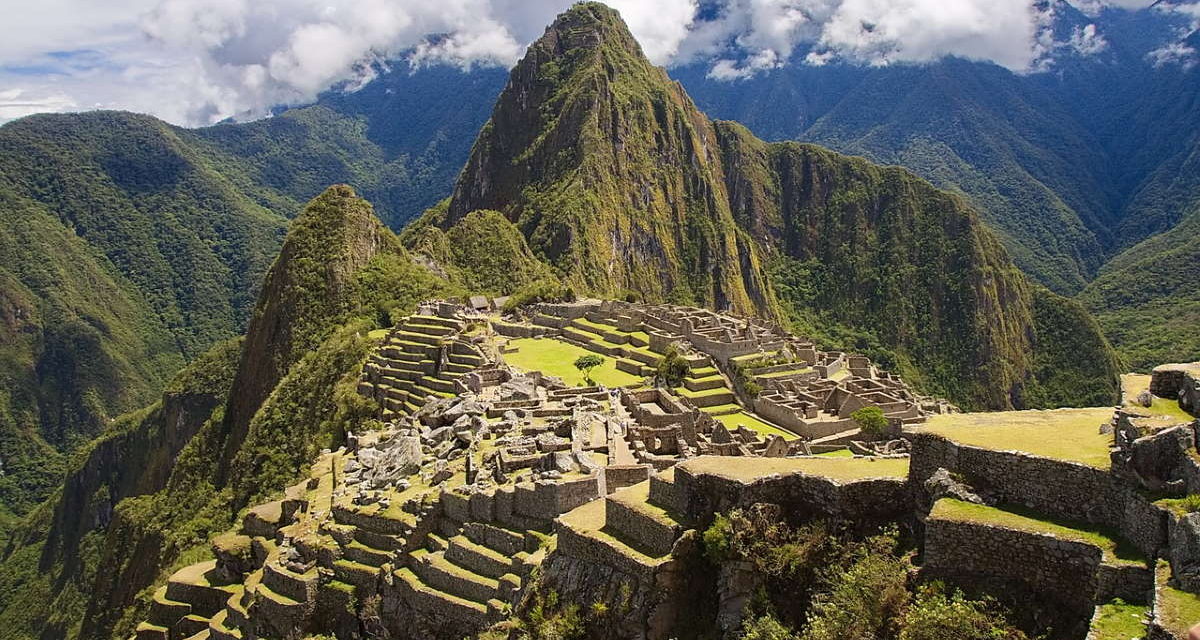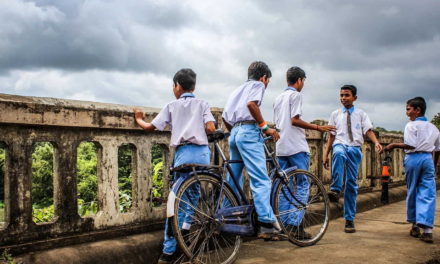Warming Up!
Chit-Chat
1. I can talk about the world:-
Form groups of 6 to 8 students. Each group should select any one Continent and share the following information about each.
Continent chosen: Asia
1) Important cities
Mumbai, Tokyo, Hong Kong, Singapore, Dubai
2) Sight-seeing places of tourist interest.
Taj Mahal, Great Wall of China, Mount Fuji, Burj Khalifa etc.
3) Food speciality-cuisine.
Indian, Chinese, Middle-eastern
4) Wild life
Tigers are naturally found in India. Panda’s are native to China.
5) Different types of region and vegetation.
Asia is blessed with a variety of regions including mountains, desserts, meadows, oceans etc. Some of the main crops grown in Asia are rice, grains, pulses, spices etc.
6) Human life.
Being the biggest continent in the world, Asia has diverse culture and each region within the continent have their own languages, festivals, religions etc.
2. Prepare a travel brochure or leaflet of your native place or any town/historical place/hill station to attract tourists using the points below:
Town Chosen: Lonavala
Nearest Railway Station: Pune
Nearest Airport: Pune
Nearest Bus Stand: Lonavala Bus Stand
Top five spots to visit:
Lion’s point
Tiger Valley
Duke’s Nose
Karla Caves
Tungarli Lake
Special features of these spots:
Beautiful view of the town below.
800 feet above sea level.
Rock shaped like a man’s nose.
Caves with carvings hundred’s of years old.
Beautiful lake for viewing sunset.
Have fun! Entertainment
Adlabs Imagica
Wax Museum
Chikki Market
Boating
Trekking points
Mouthwatering / Special Cuisine
Chikki is the local speciality. Also you can also try Maharashtrian cuisine including local snacks such as vada pav.
Other nearby sight-seeing spots
Khandala
Pune
Pavana Dam
Mulshi
Lavasa
From the main chapter pages:
1. What significant aspects should a world heritage site have?
Ans: A world heritage site should have significant cultural or natural importance to humanity.
2. What do world heritage sites include?
Ans: World heritage sites vary in type and include forests, lakes, monuments, buildings and cities.
3. Why did UNESCO launch an international campaign in 1959?
Ans: UNESCO launched an international campaign in 1959 to protect the Abu Simbel Temples in Egypt and scores of ancient Egyptian artefacts. The campaign called for the dismantling and movement of the temples to higher ground so that they did not get flooded due to the Aswan High Dam built on the river Nile.
4. Why did a White House Conference in the United States call for a ‘World Heritage Trust’?
Ans: The White House Conference in the United States called for a ‘World Heritage Trust’ to protect historic cultural sites but to also protect the world’s significant natural and scenic sites.
5. What does the World Heritage Committee consist of?
Ans: The World Heritage Committee consists of representatives from 21 State Parties that are elected for six year terms by the World Heritage Center’s General Assembly.
6. What is the World Heritage Committee responsible for?
Ans: The World Heritage Committee is responsible for establishing which sites will be listed as a UNESCO World Heritage Site.
7. When was the convention concerning the protection of World Cultural and Natural Heritage adopted and by whom?
Ans: The convention concerning the protection of World Cultural and Natural Heritage was adopted by UNESCO’s General Conference on November 16, 1972.
8. Who makes recommendations to the World Heritage Committee?
Ans: The International Council on Monuments and Sites and the World Conservation Union makes recommendations to the World Heritage Committee.
9. What is the Peru’s Machu Picchu example of?
Ans: Peru’s Machu Picchu is an example of mixed World Heritage Site with both natural and cultural significance.
English Workshop
1. Write the importance of the years given below, with reference to World Heritage Sites.
1959 – UNESCO launched an international campaign that called for the dismantling and movement of the Abu Simbel Temples in Egypt to higher ground.
1965 – White House Conference in the United States called for a “World Heritage Trust” to protect historic cultural sites but to also protect the world’s significant natural and scenic sites.
1968 – The International Union for Conservation of Nature developed similar goals as the World Heritage Trust.
1972 – Following the presentation, the goals concerning the Protection of World Cultural and Natural Heritage was adopted by UNESCO’s General Conference.
2009 – As of 2009, there were 890 World Heritage Sites that were located in 148 countries.
2. Name the following.
(a) The country where Mount Huangshan is situated.
Ans: China
(b) The famous dam in Egypt on River Nile.
Ans: Aswan High Dam
(c) The place where the conference based on Human Environment was held.
Ans: Stockholm, Sweden
(d) The country in which the highest number of World Heritage Sites are.
Ans: Italy
(e) The body which can exclude a site from World Heritage list.
Ans: World Heritage Committee
3. Complete the following sentences.
(a) The World Heritage Sites include forests, lakes, monuments, buildings and cities.
(b) There are around 890 World Heritage Sites in the world.
(c) The Role of World Heritage Committee is to be responsible for establishing which sites will be listed as a UNESCO World Heritage Site.
(d) The tenure of World Heritage Committee is six years.
(e) We can get more information about World Heritage Sites from its website at whc.unesco.org.
4. Complete the following Web by giving reasons why World Heritage Sites are in danger.
World Heritage Sites are in danger:
- War
- Poaching
- Uncontrolled Urbanization
- Heavy Tourist Traffic
- Air Pollution
- Acid Rain
- Earthquakes
- Natural Disasters
- Environmental Factors
5. Answer in your own words:
(a) What are our duties towards preservation of any historical site?
Ans: Our duties towards preservation of any historical site is to always obey the rules, follow the guidelines when visiting such sites and also to keep the environment clean.
(b) Why should we preserve the World Heritage Sites?
Ans: World Heritage Sites have significant cultural or natural importance to humanity. That is why we must preserve the World Heritage Sites.
(c) What is the role of World Heritage Sites in promoting tourism in any country?
Ans: World Heritage Sites play an important role in promoting tourism in any country. When a site in a particular country is included in UNESCO’s list of World Heritage Sites, then people from both within the country and all over the world get interested in visiting the site and see it for themselves. The more sites in the World Heritage List, the more tourism a country will receive.
6. Read the following duties towards preservation of any historical site and make sentences about each of our duties.
l Obey rules and regulations – Visitors must obey the rules and regulations, displayed at the Entrance.
Ans: Visitors must obey the rules and regulations, displayed at the Entrance.
l Maintain discipline and order
Ans: Visitors must maintain discipline and order at a historical site.
l Maintain cleanliness
Ans: Visitors should always maintain the cleanliness when visiting a historical site.
l Use dustbins and garbage bags
Ans: Visitors should use dustbins and garbage bags to throw their trash at a historical site.
l Observe silence
Ans: Visitors should observe silence when inside a historical site.
l Maintain environmental safety
Ans: Visitors must take care to maintain environmental safety at a historical site.
l Protect our country’s history/heritage.
Ans: Visitors must always protect our country’s history and heritage as they are the pride of our nation.
7. Complete the following flow – chart by choosing from the options given below to show how any site of any country can become a World Heritage Site.
Answer:
- Take an inventory
- Include on a nomination file
- Review of nomination file
- Decision of World Heritage Committee
- Inscribed on the World Heritage List.
Order from below: 3, 1, 5, 4, 2:
1) Inclusion of the name of a site from the tentative list to the nomination file.
2) Name of the site is inscribed on the World Heritage list after meeting the criteria.
3) Inclusion of the name of site for the nomination in a tentative list after an inventory in the country or the state.
4) Decision of the World Heritate Committee after review of the nominated file.
5) A review of the file included by the advisory bodies.
8. Match the pairs to define different roles of the World Heritage Sites.
Direct Answers Given Below:
1. Identify cultural and natural sites – b. of outstanding universal value across countries
2. Identify sites of – h. special importance for everyone
3. Identify sites that represent – g. best examples of world’s cultural and/or natural heritage
4. UNESCO seeks to – f. protect these sites
5. World Heritage sites should have – i. relevant development plan policies
6. World Heritage site should – c. preserve outstanding sites and natural resources
7. World Heritage site serve as – e. an asset for economic development and investment
8. World Heritage site should ensure – a. green, local based, stable and decent jobs
9. It should at large develop – d. tourism
9. Do you know the difference between:
World heritage.
Cultural heritage.
Refer to a dictionary/encyclopedia/reference books/website/google search to get the detailed meaning.
Answer:
World Heritage: As per UNESCO, World Heritage is the designation for places on Earth that are of outstanding universal value to humanity and as such, have been inscribed on the World Heritage List to be protected for future generations to appreciate and enjoy.
Cultural Heritage: Cultural Heritage means elements of great human value and creation. These could be tangible or intangible cultural heritage. Tangible Cultural Heritage include paintings, coins, sculptures, monuments, shipwrecks ruins, archaeological sites etc. Intangible Cultural Heritage can include traditions, performance arts, rituals etc.
10. Following are the ways to preserve ‘World Heritage Sites.’ Transfer these points into a small paragraph. Suggest a suitable title.
l Practical conservation of posterity
l Human/animal trespassing
l Unmonitored/uncontrolled/unrestricted access
l Threat of local administrative negligence
Answer:
Title: Preservation of World Heritage Sites
World Heritage Sites are not just the pride of the nation where they are situated, but also the pride of entire humanity. As such, they must be protected and preserved for generations to come. We must come together and formulate a practical conservation plan so that our future generations can also enjoy these incredible natural and cultural sites. Human as well as animal trespassing must be controlled and there must be control of who and what goes in and out of a World Heritage Site. Uncontrolled or unmonitored access can lead to problems such as destruction and decay of these valuable sites. More importantly, local administration should be vigilant at all times and not be negligent in the upkeep of the World Heritage Sites.
11. Find from the text minimum 8 words related to cultural heritage and make a word register. Arrange them in alphabetical order.
Ans:
1) Abu Simbel Temples
2) Artefacts
3) Buildings and Cities
4) Machu Picchu
5) Monuments
6) Mount Huangshan
7) Sydney Opera House
8) UNESCO
12. Look at the words and their meanings. Underline the correct alternatives.
Answers are underlined below:
(i) determine : (a) think over (b) decide (c) ask for (d) look over
(ii) monument : (a) statue (b) pillar (c) memorial building (d) fort
(iii) significant : (a) clever (b) effective (c) systematic (d) important
(iv) disaster : (a) problem (b) incident (c) calamity (d) accident
13. Rewrite the following sentences using ‘not only but also’ and ‘as well as’ in 2 separate sentences.
(i) UNESCO and the International Council on monuments initiated a draft convention to create an international organisation responsible for protecting cultural heritage.
Ans:
a) Not only UNESCO but also the International Council on monuments initiated a draft convention to create an international organisation responsible for protecting cultural heritage.
b) UNESCO as well as the International Council on monuments initiated a draft convention to create an international organisation responsible for protecting cultural heritage.
(ii) The state parties are responsible for identifying and nominating new sites.
Ans:
a) The state parties are responsible for not only identifying but also nominating new sites.
b) The state parties are responsible for identifying as well as nominating new sites.
(iii) Opera House in Australia and the Historic Center of Vienna in Austria are cultural sites of World Heritage.
Ans:
a) Not only Opera House in Australia but also the Historic Center of Vienna in Austria are cultural sites of World Heritage.
b) Opera House in Australia as well as the Historic Center of Vienna in Austria are cultural sites of World Heritage.
(iv) World Heritage Sites can be a combination of both cultural and natural areas.
Ans:
a) World Heritage Sites can be a combination of not only cultural but also natural areas.
b) World Heritage Sites can be a combination of cultural as well as natural areas.
(v) To protect the temples and artifacts, UNESCO launched an international campaign.
Ans:
a) To not only protect the temples but also the artifacts, UNESCO launched an international campaign.
b) To protect the temples as well as artifacts, UNESCO launched an international campaign.
14. Rewrite the following sentences replacing ‘as soon as’ by ‘No sooner than’ (Note : The phrase, ‘No sooner’ must always be followed by an auxiliary (helping verb).
For example : As soon as he came, they all gave an applause.
No sooner did he come, than all gave an applause.
(a) As soon as the Bill is passed, it will become an Act.
Ans: No sooner is the Bill is passed, than it will become an Act.
(b) As soon as the thief escaped, the family informed the police.
Ans: No sooner did the thief escaped, than the family informed the police.
(c) As soon as you have finished, you can submit your answer – papers.
Ans: No sooner have you finished, than you can submit your answer – papers.
(d) As soon as they can manage, they should change their house.
Ans: No sooner can they manage, than they should change their house.
(e) As soon as the bell will ring, the School Assembly will start.
Ans: No sooner will the bell ring, than the School Assembly will start.
15. Prepare a ‘tourism leaflet’ on any one of the following. (You may refer to the points given in Warming Up.)
(A) Your Home Town
(B) A Historical Place
(C) A Place of Natural Beauty
(D) A Place of Pilgrimage
For Answer, please see Tourism Leaflet answer above in Warming Up:
A Place of Natural Beauty – Lonavala
16. Project:
(a) Make a list of sites from our State that are included in the World Heritage Sites. Try to visit one of them. Write the importance of that World Heritage Site. Also write your impression of it in your notebook.
Answer:
State: Maharashtra
List of World Heritage Sites in Maharashtra
- Ajanta Caves
- Ellora Caves
- Elephanta Caves
- Chhatrapati Shivaji Terminus (formerly Victoria Terminus)
- The Victorian and Art Deco Ensemble of Mumbai
Visited Site: Elephanta Caves
The Elephanta Caves is located in the state of Maharashtra. It is about 10 kilometres from the city of Mumbai and can be visited by a ferry. The Elephanta Caves are situated in an island known as Elephanta Island. In local language, the name of the island means Gharapuri that translates to city of caves. These caves contain many temples carved within them dedicated to the Hindu God Lord Shiva. There is also a Buddhist Stupa in these caves. The amazing part about these rock scriptures is that archaeologists have found them to be created anywhere between the 2nd century BCE to the 9th century BCE. That is quite amazing as that means they are well over 2000 years old. The Elephanta Caves attract thousands of tourists each year that marvel at the incredible carvings within the cave rocks.
My impression of The Elephanta Caves was Awe-Inspiring. I was really happy and excited to be amongst such rich history and felt proud for the state of Maharashtra. The carvings had excellent detail and I could see the superb skills of the people who created these scriptures over 2000 years ago. The only thing is that many of the caves are in ruins and needs urgent repair. Also the tourists coming to The Elephanta Caves must be more responsible and not throw their trash just anywhere they want. Discipline and cleanliness must be maintained by the tourists.






nice